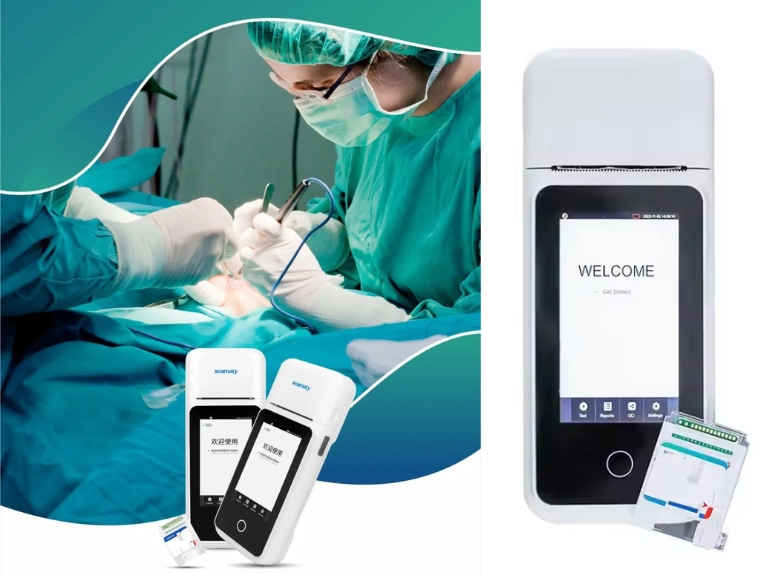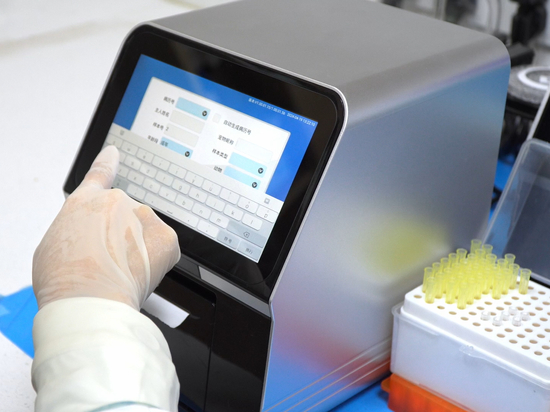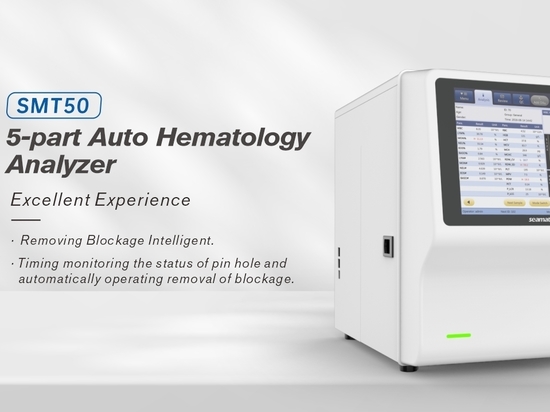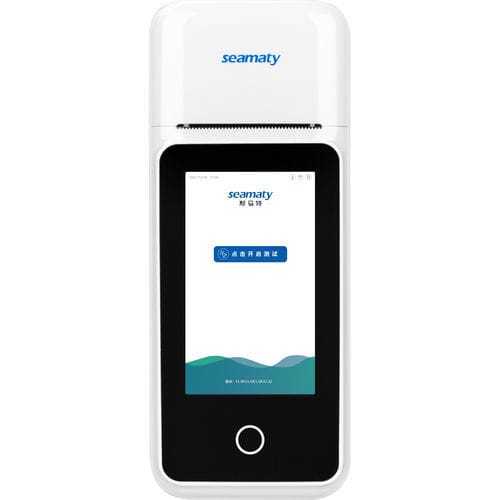
#Product Trends
In-Depth Analysis of the Precise Application of Blood Gas Analysis in the Anesthesiology Department
Seamaty SG1
From Preoperative to Postoperative: In-Depth Analysis of the Precise Application of Blood Gas Analysis in the Anesthesiology Department
Introduction
In modern medicine, the anesthesiology department is undoubtedly one of the most meticulous and indispensable components, closely safeguarding the smooth progression of surgeries and the safety of patients' lives. Blood gas analysis is a commonly used monitoring method in surgical anesthesia.
1. Overview of Blood Gas Analysis
Blood gas analysis involves measuring the acid-base balance (pH) and gases in arterial blood, specifically the oxygen partial pressure (PO2) and carbon dioxide partial pressure (PCO2), to understand the patient's acid-base balance and to distinguish between respiratory and metabolic acidosis (or alkalosis).
During the use of ventilators for assisted ventilation in critically ill patients, monitoring the blood's pH, PO2, and PCO2 is crucial for timely assessment of the ventilator's effectiveness, adjustment of parameters, and evaluation of the patient's respiratory and metabolic status. Therefore, blood gas analysis holds significant clinical importance.
2. Clinical Application of Blood Gas Analysis in the Anesthesiology Department
**Preoperative Phase**
- **Patient Assessment:** Preoperative patients may experience acid-base imbalances and electrolyte disturbances due to conditions like traumatic brain injury or organ dysfunction. Blood gas analysis can promptly identify these issues, providing a basis for preoperative preparation.
- **Transfusion Decisions:** Based on hemoglobin (Hb) levels, doctors can determine whether a patient requires a blood transfusion.
**Intraoperative Phase**
- **Monitoring Respiratory and Metabolic Functions:** Intraoperative blood gas analysis can continuously monitor parameters such as oxygen and carbon dioxide partial pressures, assessing the patient's respiratory and metabolic functions to ensure surgical safety.
- **Adjusting Anesthesia Plans:** Based on blood gas analysis results, anesthesiologists can promptly adjust the dosage and type of anesthetic drugs to avoid complications caused by anesthesia that is too deep or too shallow.
**Postoperative Phase**
- **Evaluating Recovery:** Postoperative blood gas analysis can assess the patient's recovery, including the restoration of respiratory function and the regulation of acid-base balance.
- **Preventing Complications:** Through blood gas analysis, doctors can promptly detect and manage complications such as hypoxemia and hypercapnia, preventing the deterioration of the patient's condition.
3. Clinical Advantages of Blood Gas Analysis in the Anesthesiology Department
1. **Real-Time and Accuracy:**
Blood gas analysis provides immediate data on the patient's gas and acid-base balance status. This real-time capability allows anesthesiologists to quickly respond to changes in the patient's physiological state and take appropriate measures to adjust. Additionally, the results of blood gas analysis are highly accurate, providing reliable diagnostic evidence for doctors.
2. **Guiding Personalized Treatment:**
Each patient's physiological state and condition may differ. The results of blood gas analysis can provide individualized treatment guidance for anesthesiologists. Doctors can adjust the dosage of anesthetic drugs, ventilator parameters, and fluid therapy plans based on the patient's specific condition to achieve more precise anesthesia management.
3. **Predicting Complication Risks:**
Blood gas analysis can also predict the risk of certain complications, such as postoperative respiratory failure and renal function impairment. By monitoring changes in the patient's physiological state, anesthesiologists can take preventive measures in advance, thereby reducing the incidence of complications.
4. **Enhancing Anesthesia Safety:**
As an integral part of anesthesia management, blood gas analysis provides key clinical information that helps anesthesiologists better understand the patient's overall condition. This comprehensive understanding enables doctors to promptly identify and properly address issues during the surgery, thereby significantly enhancing the safety of the anesthesia process.
4. Operational Considerations for Blood Gas Analysis
1. **Choosing the Right Timing:**
Generally, blood gas analysis should be performed after the patient is stable, avoiding frequent blood gas analysis during the surgery to reduce the patient's pain and the risk of complications.
2. **Selecting the Appropriate Site:**
Generally, arterial blood gas analysis is preferred because arterial blood can reflect the patient's overall condition. When choosing a site for arterial blood gas analysis, it is advisable to select locations that are easy to puncture, have fewer complications, and have minimal impact on the patient, such as the radial artery or femoral artery.
3. **Promptly Addressing Abnormal Results:**
When blood gas analysis results show abnormalities, such as hypoxemia, hypercapnia, or acid-base balance disorders, doctors should immediately take action, such as adjusting ventilator parameters, providing oxygen therapy, or adjusting the acid-base balance, to ensure the patient's safety and the smooth progress of the surgery.
#### Conclusion
In summary, blood gas analysis holds an extremely important position and role in the clinical application of the anesthesiology department. Through blood gas analysis, anesthesiologists can gain a comprehensive understanding of the patient's physiological state, promptly adjust anesthesia plans and treatment measures, and ensure the safety of the surgery and the patient's life.
The Smart SG1 Blood Gas and Electrolyte Analyzer, which uses dry electrochemical methods combined with microfluidic technology, features a fully automated detection process, is easy to operate, provides accurate and reliable results, and is compact with a built-in high-capacity lithium battery. It can be used both in central laboratories and at the bedside, enabling room-to-room sharing and achieving true POCT blood gas analysis. This provides better auxiliary diagnostic services for anesthesia/surgical clinical practice.





